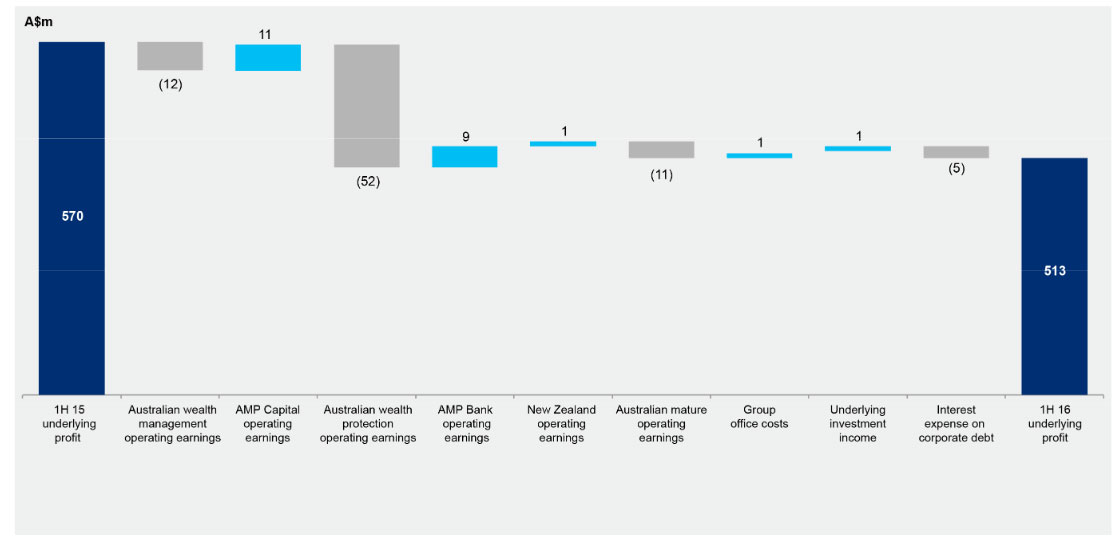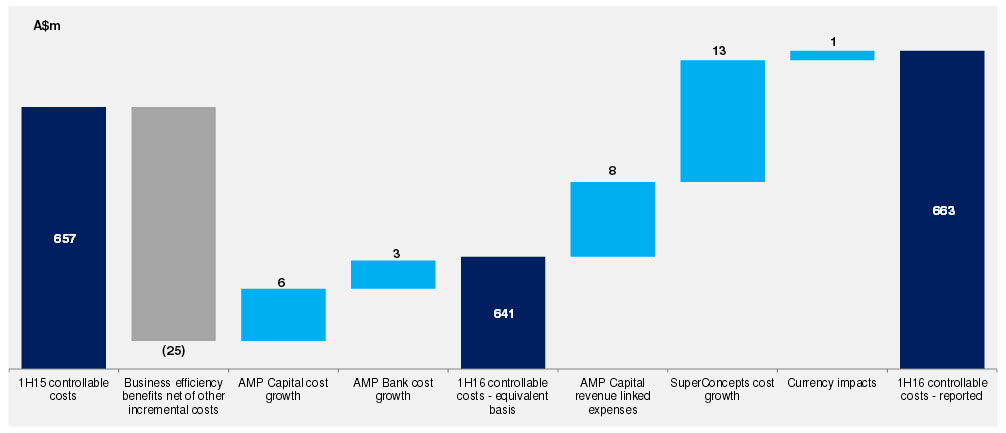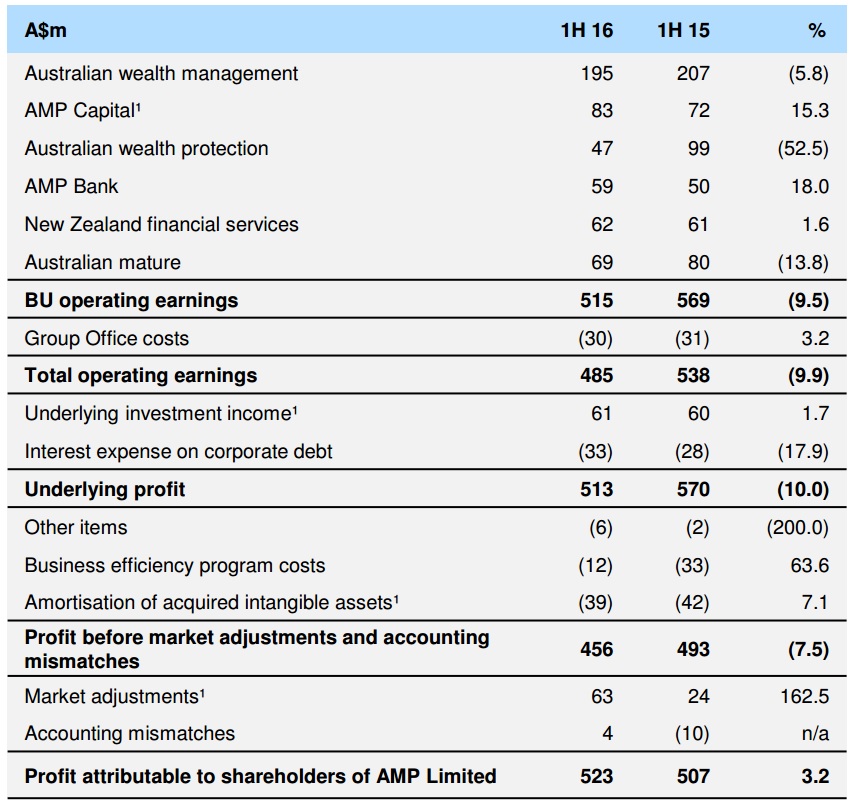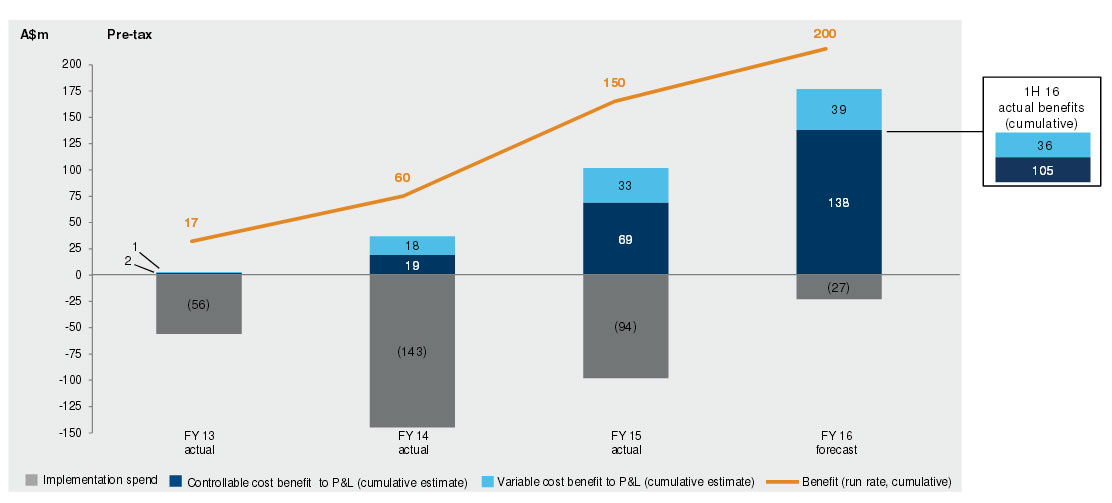Australian wealth management net cashflows were $209 million during the quarter, down from $342 million in Q1 15. Cashflows were impacted by weaker investor confidence, ongoing market volatility and advisers adjusting to an enhanced regulatory environment. External inflows represented approximately half of total cash inflows, which were $2.8 billion in Q1 16, down 1 per cent on Q1 15.
Total AUM was $112.6 billion, down 2 per cent from $115.1 billion at the end of Q4 15 (and 3 per cent from $116.1 billion at Q1 15). The decline since 31 December largely reflects negative investment market movements during the quarter. Average AUM fell 2 per cent to $112.1 billion from Q4 15.
Total retail and corporate superannuation net cashflows on AMP platforms were $383 million in Q1 16, down from $638 million in Q1 15, as volatile markets and lower investment activity impacted cash inflows. Strong pension AUM growth in FY 15 resulted in higher pension payments in Q1 16.
AMP’s leading wrap platform, North, reported net cashflows of $820 million in Q1 16, down 11 per cent from Q1 15. While North inflows rose 9 per cent from Q1 15, this was offset by a 25 per cent rise in outflows, reflecting strong pension driven AUM growth. Approximately 70 per cent of cash outflows were internal transfers, largely within the North platform.
North AUM grew to $21.2 billion at the end of the quarter, up 19 per cent from $17.8 billion at the end of Q1 15 and up 2 per cent from $20.9 billion at Q4 15.
AMP Flexible Super reported net cashflows of $84 million in Q1 16, down from $347 million in Q1 15, in part driven by lower inflows, reflecting fewer superannuation to pension transitions and growing adviser preference for North. Flexible Super AUM fell 1 per cent in Q1 16 to $14.9 billion and increased 5 per cent from $14.2 billion at Q1 15.
Corporate superannuation net cashflows were $109 million in Q1 16 compared to net cash outflows of $23 million in Q1 15. Cashflows continued to benefit from member transitions from recent large mandate wins while the prior period was impacted by significant outflows within a large corporate plan.
External platform net cash outflows were $174 million in Q1 16 compared to a net cash outflow of $296 million in Q1 15. Outflows from Genesys advisers leaving AMP continue to be lower than expected, with a net cash outflow of $33 million during the quarter. Further outflows of around $350 million are expected during the remainder of FY 16.
Assets under administration for AMP’s self-managed superannuation fund (SMSF) business SuperConcepts were $18.2 billion at the end of the first quarter, a decrease of $566 million or 3 per cent from Q4 15. Across administration and software services, SuperConcepts added approximately 400 funds during Q1 16 and now supports more than 38,400 SMSFs of which 42 per cent are funds under administration. In addition, a large administration deal was completed in the quarter, with approximately 1,300 funds yet to transition to SuperConcepts.
AMP Capital had net cash outflows in Q1 16 of $1,540 million, comprising external net cash outflows of $477 million and internal net cash outflows of $1,063 million. External cashflows were impacted by challenging domestic and international market conditions.
Net cashflows from AMP’s share of the China Life AMP Asset Management Company (CLAMP) alliance decreased to $22 million from $143 million in Q1 15, reflecting the redemption of money market funds of some corporate and institutional clients, in line with their liquidity management practice. These funds were subsequently reinvested in CLAMP products in Q2 16. In Japan, low investor confidence continues to impact cashflows across AMP’s distribution partnerships.
AMP Capital AUM at the end of Q1 16 was $156.5 billion, down 2 per cent from $159.9 billion at the end of Q4 15 and $160.5 billion at Q1 15. Average AUM decreased 1 per cent during the quarter to $157.2 billion, reflecting market volatility.
AMP New Zealand financial services’ net cashflows of A$60 million in Q1 16 were up A$8 million from A$52 million in Q1 15. Softer flows into KiwiSaver were offset by a decline in Other net cash outflows.
Australian mature net cash outflows in Q1 16 were $319 million, compared to a net cash outflow of $361 million in Q1 15.
AMP Bank’s mortgage book increased to $15.3 billion at the end of Q1 16 from $15.2 billion at Q4 15. The AMP aligned adviser channel contributed 22 per cent of AMP Bank’s mortgage new business, impacted by lower investor lending growth in Q1 16. The deposit book increased $415 million (4 per cent) in Q1 16 relative to December 2015.
Australian wealth protection annual premium in-force (API) was down 1 per cent in Q1 16 to $1,943 million compared to $1,958 million in Q4 15. The small decline was primarily driven by 1 per cent falls in API for individual lump sum and individual income protection.
Business update on Australian wealth protection business
For the first quarter of 2016, the Australian wealth protection business was impacted by claims experience losses of $18 million, with the majority of the losses being in retail income protection across both incidence and termination.
While we continue to monitor insurance experience closely, it has not caused us to alter our best estimate assumptions at the present time.
As previously flagged, volatility in Australian wealth protection experience continues to be expected from period to period. During remediation of the Australian wealth protection business, this volatility may at times be amplified.
AMP’s ongoing insurance claims improvement program continues to deliver improved capability and customer outcomes and remains important to the long-term sustainability of the wealth protection business. In addition, we have seen the broader market re-price insurance providing increased flexibility to adjust prices upward if required.








